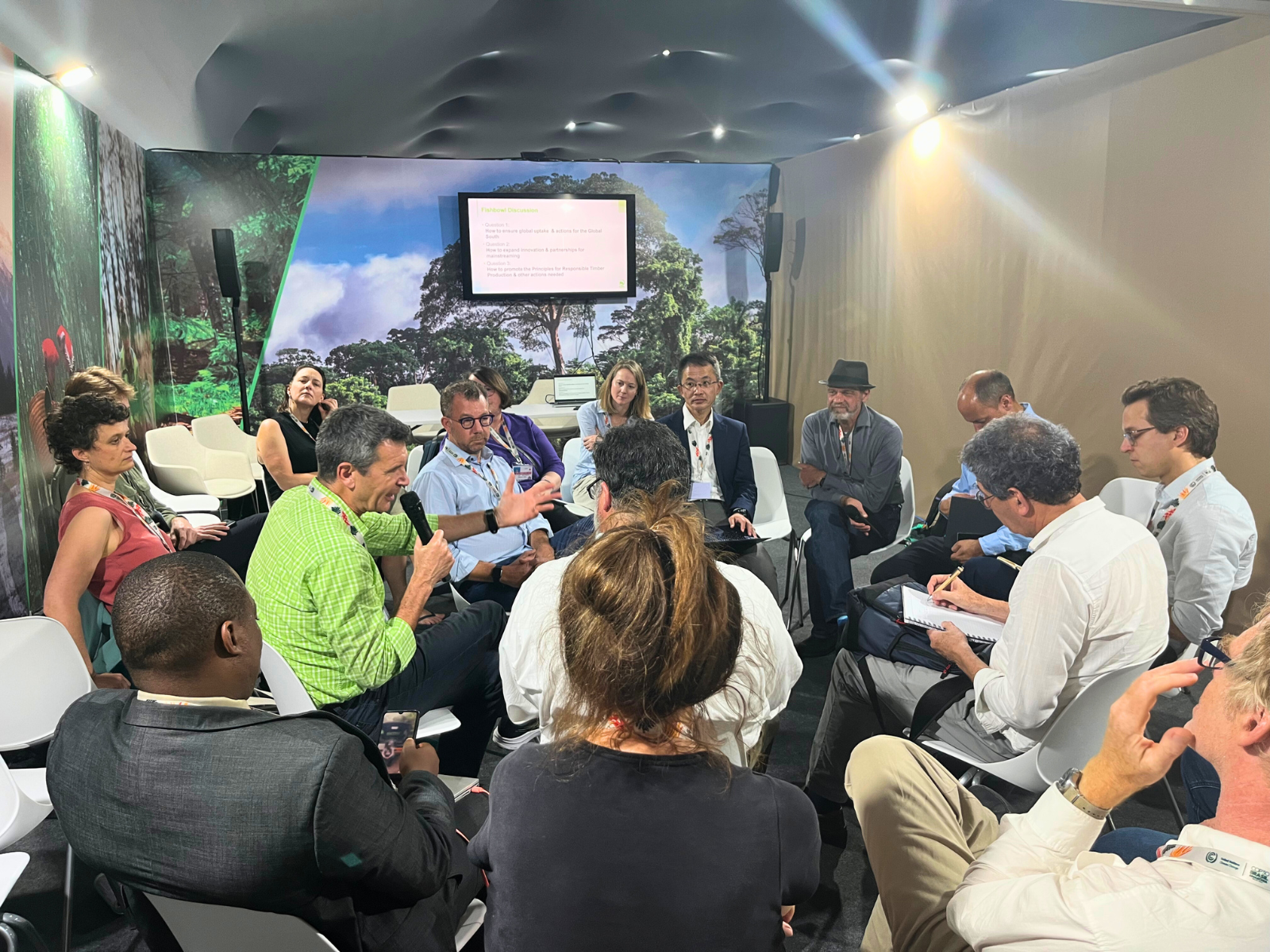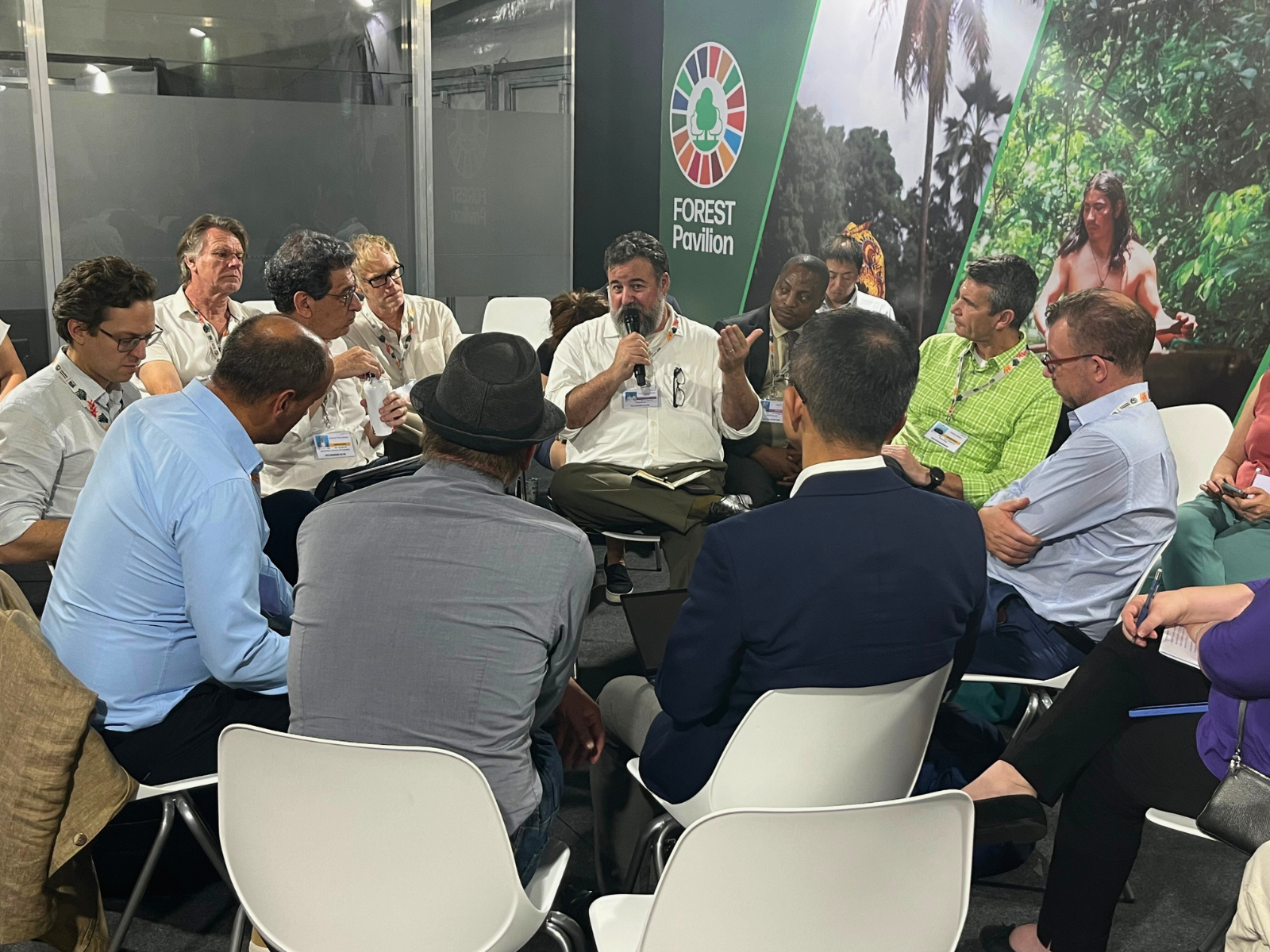Building for Forests at COP30: Wood-Based Construction as a Climate and Forest Strategy
At the Forest Pavilion, PEFC International and FAO, on behalf of the SW4SW initiative, co-hosted a fishbowl discussion exploring how timber buildings can support climate mitigation, restoration efforts, and sustainable housing.
Building for Forests at COP30: Wood-Based Construction as a Climate and Forest Strategy
24 November 2025 Event report
Wood-based construction gained prominence at COP30 as a pathway to align climate action, urban development, and responsible forest management.
At the Forest Pavilion, PEFC International and FAO, on behalf of the Sustainable Wood for a Sustainable World (SW4SW) initiative, co-hosted a fishbowl discussion exploring how timber buildings can support climate mitigation, restoration efforts, and sustainable housing.
Moderating the session, Thorsten Arndt, Head of Advocacy at PEFC International, framed wood construction as a bridge between cities and forests.
“If we use wood to build cities, then cities will help us build forests.” He noted that responsibly sourced timber can send a demand signal that supports restoration, innovation in processing, and more diversified forest value chains.

A plan designed to mobilise action
Thais Linhares Juvenal from FAO presented the plan developed by Sustainable Wood for a Sustainable World (SW4SW), the Forests and Climate Leaders Partnership (FCLP), and Built by Nature, which promotes forest-positive and low-carbon construction.
She outlined the plan’s structure across four shifts - paradigm, technology, finance and policy - with targets including investment in engineered wood technologies, curriculum reform in technical institutions, forest production through planted forests and agroforestry, and policy reforms that create fair competition for sustainable materials. The message centred on implementation capacity rather than ambition alone.
Principles as a parallel alignment tool

Paul King, CEO of Built by Nature, contextualised the plan within the Principles for Responsible Timber Construction.
He described the Principles as a common reference point across global markets to enable locally grounded action, including sustainability of sourcing, lifecycle impacts and circular design. The discussion referenced how these principles align with the Acceleration Plan.
The crossroads: culture, policy, markets

Participants spoke candidly about the obstacles that slow uptake.
In many countries, wood remains associated either with poverty or luxury, rarely with mainstream housing.
Others pointed to tax regimes that favour concrete, limited professional training, and the challenge of building trust where large-scale timber construction is still unfamiliar.
A recurring theme emerged: markets scale when buildings exist. Demonstration projects, procurement rules and architectural visibility matter as much as national strategies.
Demand and confidence rise when people work, live and gather inside buildings made of wood - when the solution is physical rather than theoretical.
The conditions for scaling wood construction are in place, but progress depends on connecting policy, finance, and forest management rather than treating them as separate domains.
In many regions, demand from the construction sector could help fund the restoration of degraded forests, provided that assurance systems and traceability frameworks support trust and transparency.
Responsible supply as an enabling condition
Throughout the discussion, PEFC’s role emerged indirectly through the system it enables: a global framework for sustainable forest management, traceability from forest to market, and assurance mechanisms that allow governments and businesses to act with confidence.
As the session drew to a close, Thorsten emphasised the broader implications for forest landscapes.
“A working forest is a standing forest. If cities start building with wood at scale, they can become engines for restoring degraded landscapes.” The remark underscored a central theme of the event: timber construction is not simply a substitution for concrete or steel, but a mechanism to align markets, restoration, and climate objectives in a mutually reinforcing way.